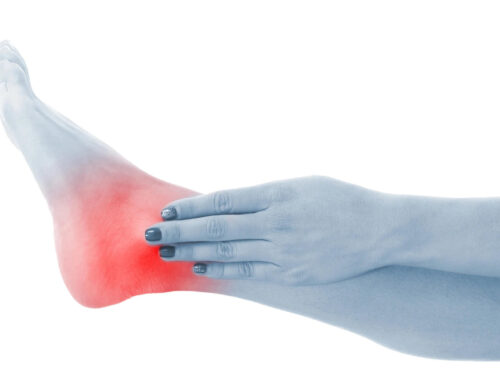Arthroscopic surgery has become popular for joint problems such as torn ligaments, cartilage damage, and arthritis in Boise. This type of surgery is preferred over traditional open surgery due to its numerous benefits, including smaller incisions, less scarring, and a shorter recovery time.
If you are experiencing joint pain or have been diagnosed with a joint condition you may be a candidate for arthroscopic surgery.
In this article, we will explore the benefits and process of arthroscopic surgery and help you decide if this procedure is right for you.
What is Arthroscopic surgery?
Arthroscopic surgery, also known as arthroscopy, is a minimally invasive surgical procedure that allows doctors to visualize, diagnose, and treat problems within a joint. During an arthroscopic surgery, a thin, flexible tube called an arthroscope is inserted into the joint through a small incision. The arthroscope contains a light and a camera, which allows the surgeon to see inside the joint on a video monitor.
How arthroscopic surgery differs from traditional open surgery
The main difference is the size of the incision. In traditional open surgery, a large incision is made to access the inside of the joint. In arthroscopic surgery, only small incisions are made to insert the arthroscope and any necessary surgical instruments.
Another difference between the two types of surgery is the amount of tissue that is disrupted. In traditional open surgery, the surgeon must move and cut through healthy tissue to access the joint. This can lead to more scarring and a longer recovery time. In arthroscopic surgery, only a small amount of tissue is disturbed, resulting in less scarring and a faster recovery.
Additionally, arthroscopic surgery is typically performed on an outpatient basis, meaning the patient does not need to stay overnight in the hospital. Traditional open surgery often requires an overnight stay in the hospital and a longer period of recovery.
Overall, arthroscopic surgery offers many benefits over traditional open surgery, including smaller incisions, less scarring, and a shorter recovery time. However, it is important to discuss with your doctor which type of surgery is best for your specific condition and needs.
The benefits of this type of surgery
There are several benefits of arthroscopic surgery for patients in Boise. Some of the most notable benefits include:
Smaller incisions: As mentioned earlier, arthroscopic surgery involves making small incisions to insert the arthroscope and any necessary surgical instruments. This means less scarring and a faster recovery time.
Less pain: Because arthroscopic surgery involves smaller incisions, it is generally less painful than traditional open surgery. This can lead to a quicker recovery and a lower risk of complications.
Shorter recovery time: The recovery time for arthroscopic surgery is typically shorter than that of traditional open surgery. This is because the procedure involves less disruption to healthy tissue, which helps the body heal faster.
- Reduced risk of infection: The small incisions used in arthroscopic surgery decrease the risk of infection. This is because there is less tissue that needs to heal and a smaller area for bacteria to enter the body.
- Improved range of motion: Arthroscopic surgery can help improve range of motion in the affected joint. This is because the procedure allows the surgeon to remove any damaged tissue or debris that may be causing joint stiffness.
- Quicker return to normal activities: The shorter recovery time associated with arthroscopic surgery means that patients can get back to their normal activities faster. This is especially important for active individuals or those who need to return to work or other daily activities as soon as possible.
Overall, arthroscopic surgery can offer numerous benefits. It is important to discuss with your doctor whether this type of surgery is right for you.
Common Conditions That Can Be Treated with Arthroscopic Surgery
Some common conditions where this surgery is useful are:
- Torn ligaments: Ligaments are strong bands of tissue that connect bones together. If a ligament becomes torn, it can cause pain and instability in the affected joint. Arthroscopic surgery can be used to repair torn ligaments, such as the ACL (anterior cruciate ligament) in the knee.
- Cartilage damage: Cartilage is a smooth, rubbery tissue that covers the ends of bones and helps them move smoothly against each other. Damage to the cartilage can cause pain and difficulty moving the joint. Arthroscopic surgery can be used to remove damaged cartilage and smooth out rough areas.
- Arthritis: Arthritis is a condition that causes inflammation in the joints. It can cause pain, swelling, and stiffness. Arthroscopic surgery can be used to remove damaged cartilage or bone, which can help reduce pain and improve mobility.
These are just a few examples of the many conditions that can be treated with arthroscopic surgery. It is important to discuss with your doctor whether this type of surgery is appropriate for your specific condition and needs.
The process of arthroscopic surgery: step by step
The process of arthroscopic surgery typically involves the following steps:
- Preparation: Before the surgery, the patient will be given instructions on how to prepare, including what medications to take or avoid, and whether to eat or drink before the surgery. The patient will also be asked to sign a consent form.
- Anesthesia: Arthroscopic surgery is usually performed under general anesthesia, which means the patient will be put to sleep during the procedure. In some cases, regional anesthesia or local anesthesia may be used.
- Making the incisions: The surgeon will make small incisions, typically about the size of a buttonhole, in the skin near the affected joint. These incisions are used to insert the arthroscope and any necessary surgical instruments.
- Inserting the arthroscope: The arthroscope, a thin, flexible tube with a light and camera, is inserted into the joint through one of the incisions. The camera sends images of the inside of the joint to a video monitor, allowing the surgeon to see what is going on inside the joint.
- Performing the surgery: Using the arthroscope and other instruments inserted through the incisions, the surgeon will diagnose and treat any problems within the joint. This may involve removing damaged tissue, repairing a torn ligament, or smoothing rough areas of cartilage.
- Closing the incisions: Once the surgery is complete, the incisions are closed with stitches or staples. A bandage may be applied to cover the incisions.
- Recovery: After the surgery, the patient will be taken to a recovery room to be monitored until the anesthesia wears off. The patient may need to wear a splint or bandage for a period of time to protect the joint and help it heal. Physical therapy may also be recommended to help the patient regain strength and mobility.
Overall, the process of arthroscopic surgery is typically straightforward and involves a series of steps to prepare the patient, perform the surgery, and aid in recovery. It is important to follow the surgeon’s instructions and attend any recommended follow-up appointments to ensure a successful outcome.
Final Verdict: Is it right for you?
If you are experiencing joint pain or have been diagnosed with a joint condition, you may be a candidate for arthroscopic surgery. It is important to discuss your options with an experienced orthopedic surgeon in Boise to determine the best treatment plan for your specific condition and needs.
Ultimately, the decision to undergo arthroscopic surgery should be based on a thorough evaluation of your individual circumstances and a careful consideration of the potential risks and benefits. Your doctor can help you make an informed decision about whether arthroscopic surgery is right for you.




